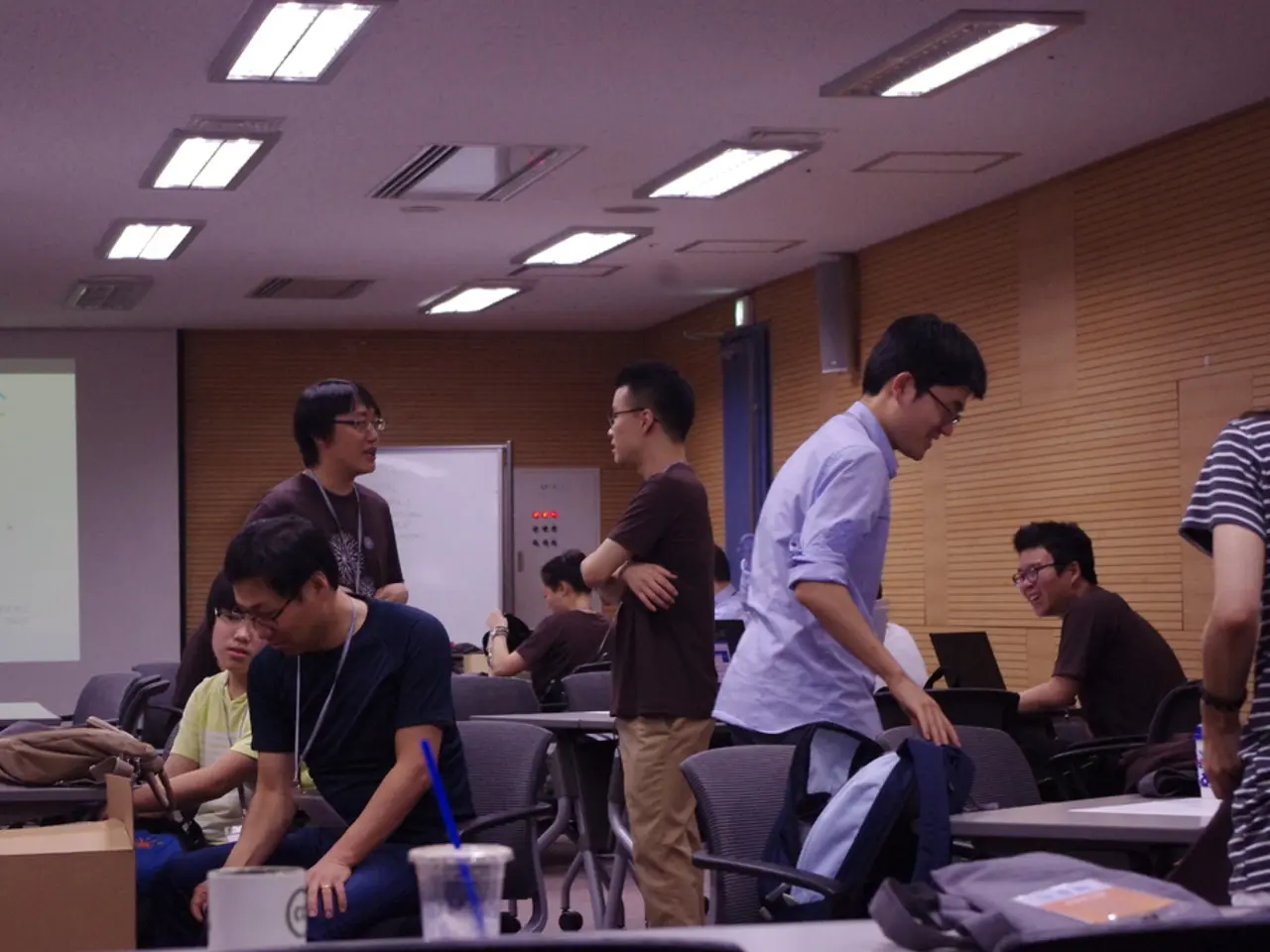Strategies for Achieving Success in the Adoption of Educational Tech
New technology implementations in education can be a game-changer, but their success hinges on effective leadership, clear communication, and comprehensive training.
Leadership Strategies
Leaders play a crucial role in the successful integration of technology. They should focus on intentional planning, aligning technology use with instructional goals to support teaching and learning effectively. Centralising data and technology decisions can provide real-time insights, enabling timely instructional adjustments and support. Fostering collaboration among teachers and administrators is also essential, as it allows for the sharing of best practices and cooperative problem-solving [2][4].
Communication Strategies
Effective communication is key to a smooth implementation process and higher levels of user satisfaction. Establishing continuous, open channels between teachers, students, and administrators is vital. This can be achieved through emails, surveys, and instant chat tools, facilitating feedback and guidance. Promoting teamwork and collaboration among students through technology-enabled group work encourages peer mentoring and support, strengthening learning communities [1]. Communicating the benefits and expected outcomes of technology adoption clearly to all stakeholders is also important, as it helps build buy-in and reduces resistance [4].
Training Strategies
All users must receive purposeful training in a variety of modalities. Professional learning closely tied to the curriculum and instructional practice ensures teachers understand how to integrate technology meaningfully rather than superficially. Ongoing, flexible training opportunities, including hands-on and virtual sessions, help build confidence and competence with new tools. Using data-driven insights to identify specific areas where teacher support and training are needed enables targeted interventions that improve usage and outcomes [2][3].
Gathering general feedback from users can help ensure success and improve future implementations. Designating a specific support liaison can streamline communication and foster user confidence. All training should include contact information for support, necessary job aids, information sources, and options for additional training.
As educators navigate the evolving landscape of educational technology, it is important to remain adaptable and committed to continuous improvement. These effective strategies, when implemented thoughtfully, can maximise technology’s potential by improving teacher productivity, enhancing student engagement through personalised and flexible learning, and creating a supportive learning environment that sustains innovation [1][3][4].
- The teacher, equipped with comprehensive training, can leverage technology in the classroom to stem from traditional teaching methods, fostering a more effective and engaging learning environment.
- In the midst of the rapid advancements in education-and-self-development, an effective leader in a school setting should prioritize stemming from a prescriptive approach to implementing technology, ensuring its use is aligned with both educational goals and the day-to-day learning process.
- To make technology a foundational element in our schools, it's essential that administrators foster an environment of continuous learning, offering stemming training opportunities that cater to the unique needs and preferences of educators, helping them seamlessly integrate technology into their teaching methods.




